Search Result
Results for "
lipid accumulation
" in MedChemExpress (MCE) Product Catalog:
1
Biochemical Assay Reagents
| Cat. No. |
Product Name |
Target |
Research Areas |
Chemical Structure |
-
- HY-133707
-
|
|
Endogenous Metabolite
|
Metabolic Disease
|
|
β-Muricholic acid is a potent and orally active biliary cholesterol-desaturating agent. β-Muricholic acid prevents cholesterol gallstones. β-Muricholic acid inhibits lipid accumulation. β-Muricholic acid has the potential for the research of nonalcoholic fatty liver disease (NAFLD) .
|
-
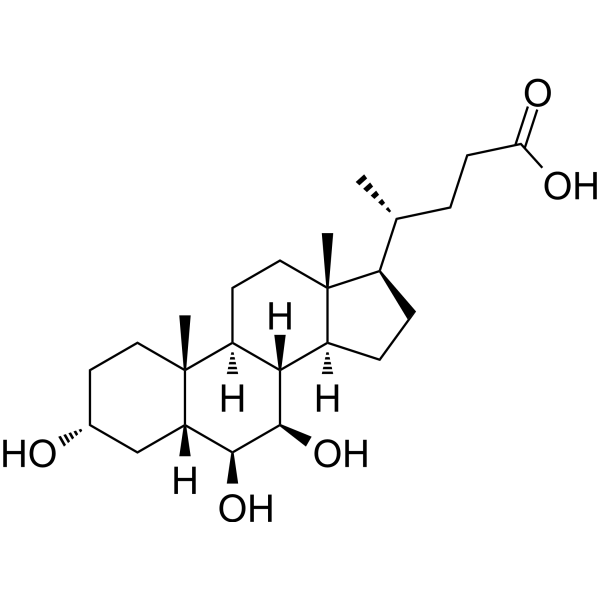
-
- HY-147501
-
|
|
Thyroid Hormone Receptor
|
Metabolic Disease
|
|
TRβ agonist 3 (Compound 3) is a potent agonist of TRβ. TRβ agonist 3 reduces lipid accumulation in HepG2 and promote lipolysis with comparable effects. TRβ agonist 3 is a new potential TRβ-selective thyromimetics .
|
-

-
- HY-147500
-
|
|
Thyroid Hormone Receptor
|
Metabolic Disease
|
|
TRβ agonist 2 (Compound 1) is a potent agonist of TRβ. TRβ agonist 2 reduces lipid accumulation in HepG2 and promote lipolysis with comparable effects. TRβ agonist 2 is a new potential TRβ-selective thyromimetics .
|
-
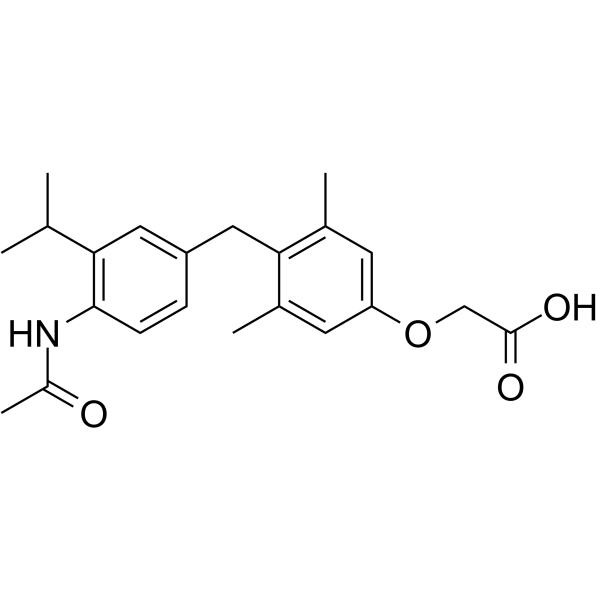
-
- HY-N8466
-
|
|
Reactive Oxygen Species
|
Metabolic Disease
|
|
(-)-Lyoniresinol 9'-O-glucoside is an inhibitor of ROS. (-)-Lyoniresinol 9'-O-glucoside reduces lipid accumulation and lipid metabolic disorders in FFAs-exposed HepG2 cells. (-)-Lyoniresinol 9'-O-glucoside inhibits high glucose-induced reactive oxygen species production .
|
-
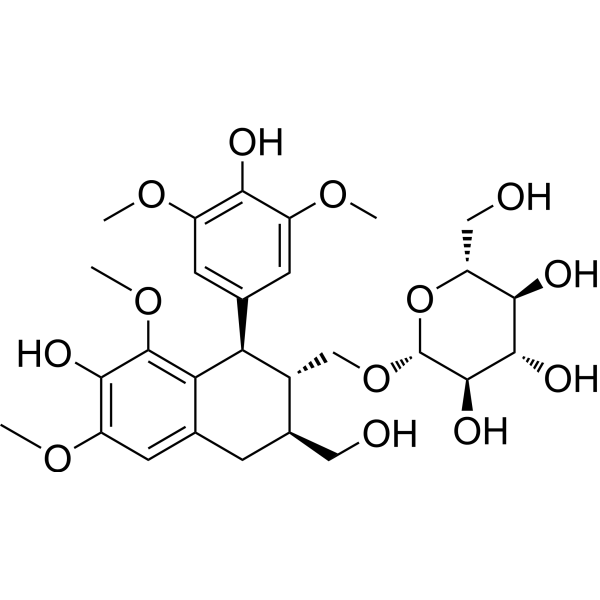
-
- HY-108571
-
|
|
PPAR
|
Metabolic Disease
|
|
CP-775146 is a selective PPARα agonist that binds strongly to the PPARα ligand. CP-775146 efficiently alleviates obesity-induced liver damage, prevents lipid accumulation by activating the liver fatty acid β-oxidation pathway .
|
-
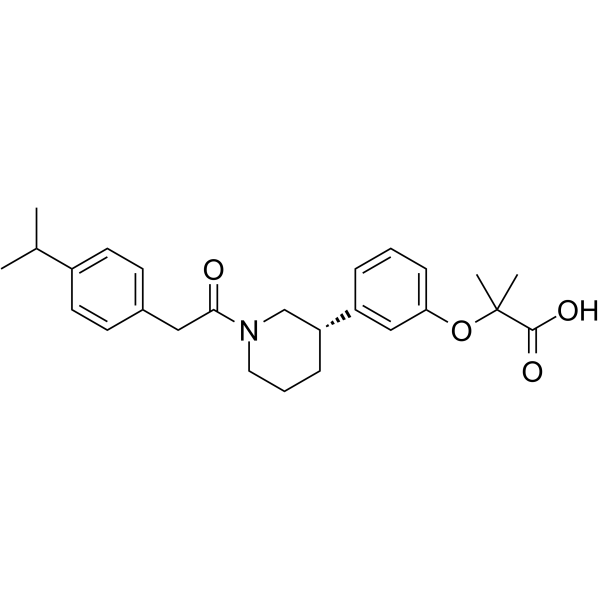
-
- HY-129143
-
|
Dp3‐Sam chloride
|
Others
|
Metabolic Disease
Inflammation/Immunology
|
|
Delphinidin-3-sambubioside (Dp3‐Sam) chloride is an anthocyanin that has orally active anti-inflammatory activity. Delphinidin-3-sambubioside chloride inhibits LPS-induced inflammatory factors release. Delphinidin-3-sambubioside chloride also alleviates hepatic lipid accumulation in HFD rats. Delphinidin-3-sambubioside chloride can be isolated from Hibiscus sabdariffa L. .
|
-
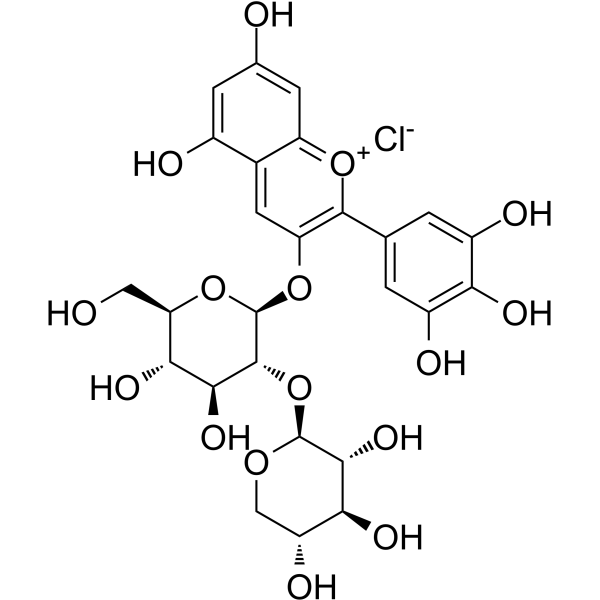
-
- HY-N12440
-
|
|
Others
|
Others
|
|
Sarmenoside II is a flavonol glycoside with activity that inhibits lipid accumulation. Sarmenoside II inhibits albumin-oleate-induced lipid accumulation in HepG2 cells by approximately 30% at 100 μM.
|
-
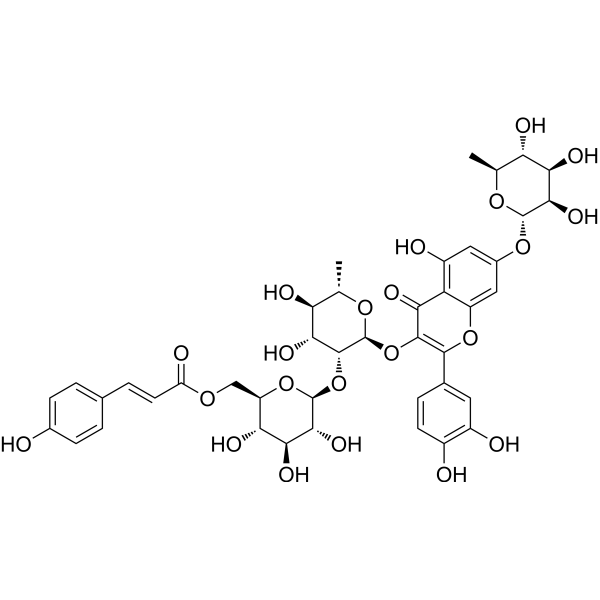
-
- HY-146683
-
|
|
Aldehyde Dehydrogenase (ALDH)
Apoptosis
|
Cancer
|
|
KS106 is a potent ALDH inhibitor with IC50s of 334, 2137, 360 nM for ALDH1A1, ALDH2, and ALDH3A1, respectively. KS106 shows antiproliferative and anticancer effects with low low toxic.KS106 significantly increases ROS activity, lipid peroxidation and toxic aldehyde accumulation. KS106 induces apoptosis and cell cycle arrest at the G2/M phase .
|
-

-
- HY-146682
-
|
|
Aldehyde Dehydrogenase (ALDH)
Apoptosis
|
Cancer
|
|
KS100 is a potent ALDH inhibitor with IC50s of 230, 1542, 193 nM for ALDH1A1, ALDH2, and ALDH3A1, respectively. KS100 shows antiproliferative and anticancer effects with low low toxic. KS100 significantly increases ROS activity, lipid peroxidation and toxic aldehyde accumulation. KS10600 induces apoptosis and cell cycle arrest at the G2/M phase .
|
-

-
- HY-N10063
-
-
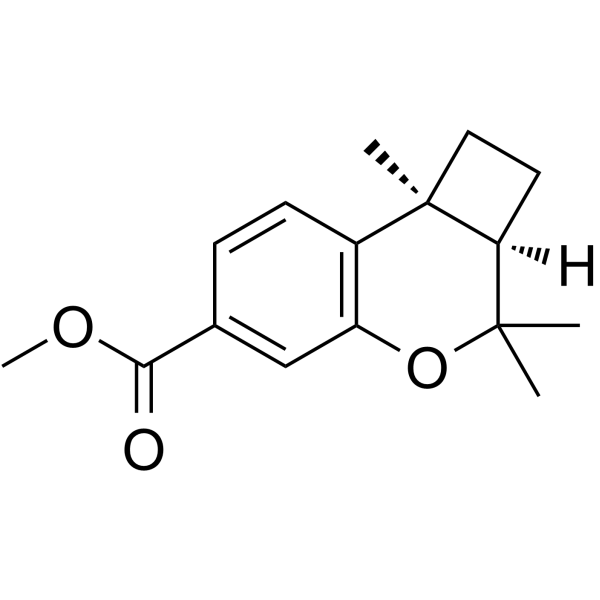
-
- HY-124417
-
|
|
Others
|
Metabolic Disease
|
|
SBI-477 (compound 41) analog inhibits intracellular lipid accumulation, increase celluar glucose uptake .
|
-

-
- HY-130791
-
-
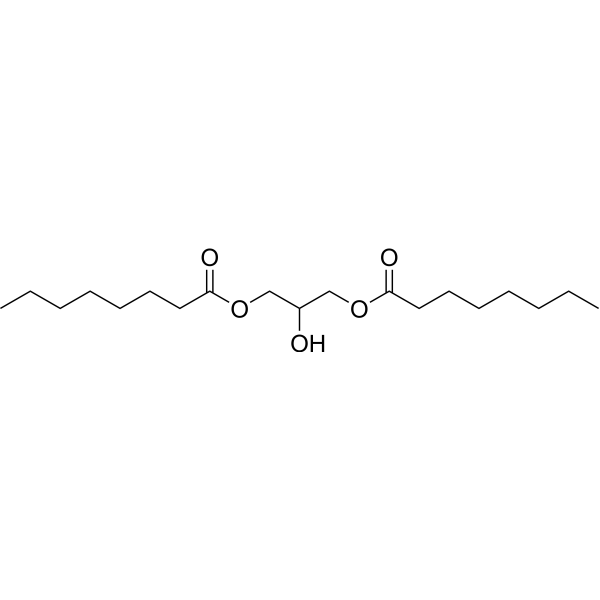
-
- HY-N10428
-
|
|
Others
|
Metabolic Disease
|
|
Ganoapplanoid F, a highly oxygenated lanostane triterpenoid from Ganoderma applanatum, inhibits lipid accumulation in adipocytes. Ganoapplanoid F can be used for the research of obesity .
|
-

-
- HY-139369
-
|
|
Reactive Oxygen Species
|
Cancer
|
|
QD394 is a reactive oxygen species (ROS) inducer that can induce lipid peroxidation, increase intracellular ROS accumulation, inhibit STAT3 phosphorylation, and induce ferroptosis .
|
-
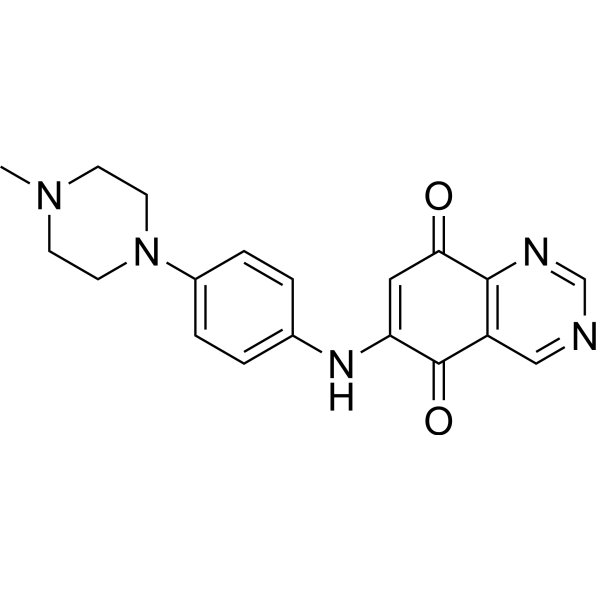
-
- HY-137996
-
|
|
Akt
mTOR
|
Metabolic Disease
|
|
Dehydrovomifoliol is a AKT/mTOR dual inhibitor. Dehydrovomifoliol reduces lipid accumulation and lipogenesis by inhibiting the AKT/mTOR signaling pathway. Dehydrovomifoliol is used in nonalcoholic fatty liver disease research (NAFLD) .
|
-
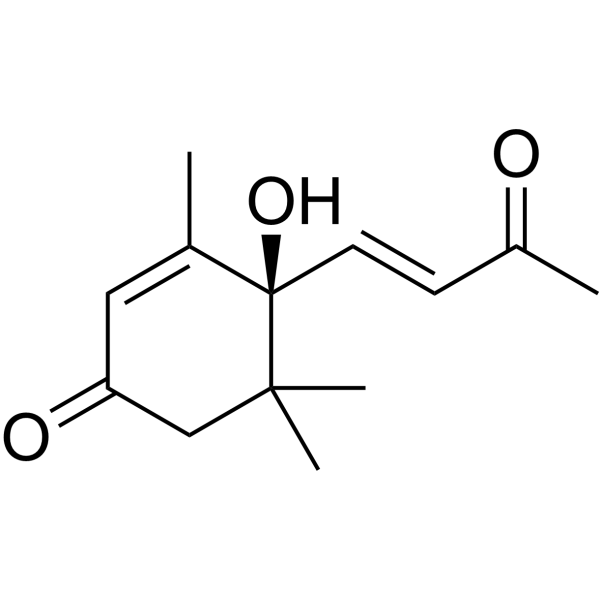
-
- HY-129297
-
|
|
Endogenous Metabolite
|
Metabolic Disease
|
|
CMPF can be found in trace constituent of urine and blood. CMPF is a biomarker of type 2 diabetes. CMPF can act on the β cell and induces impaired mitochondrial function. CMPF decreases glucose-induced ATP accumulation, and induces oxidative stress. CMPF reverses hepatic lipid accumulation and improves insulin sensitivity in obese mice .
|
-

-
- HY-N8007
-
|
|
Others
|
Metabolic Disease
|
|
Quercetin 3-O-Glc-(1→2)-Rha-7-O-Rha is a flavonol glycoside with no significant inhibitory activity against albumin oleate-induced lipid accumulation.
|
-
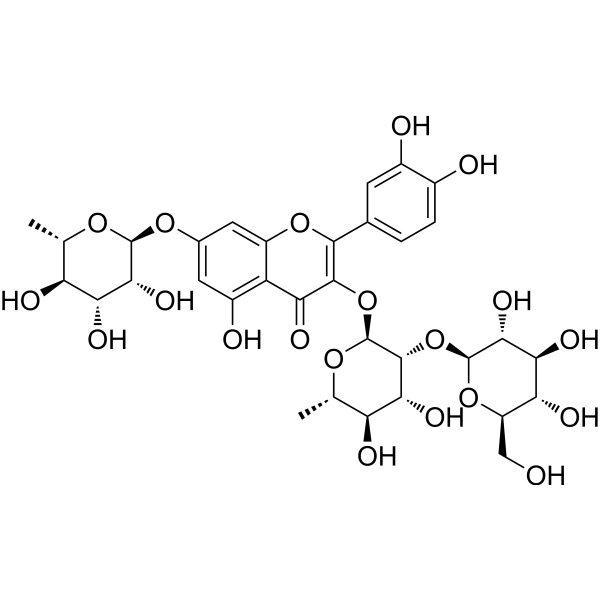
-
- HY-128075
-
|
|
Others
|
Cancer
|
|
Acifluorfen, a protoporphyrinogen oxidase (PROTOX) inhibitor herbicide, promotes the accumulation of protoporphyrin IX (PPIX), and induces tumors in the rodent liver. Acifluorfen causes strong photooxidative destruction of pigments and lipids in sensitive plant species .
|
-

-
- HY-119248
-
|
MK-0767
|
PPAR
|
Metabolic Disease
|
|
KRP-297 is a PPARα and PPARγ agonist potentially for the research of type 2 diabetes and dyslipidemia. KRP-297 restores reduced lipid oxidation, and inhibits of enhanced lipogenesis and triglyceride accumulation in the liver.
|
-
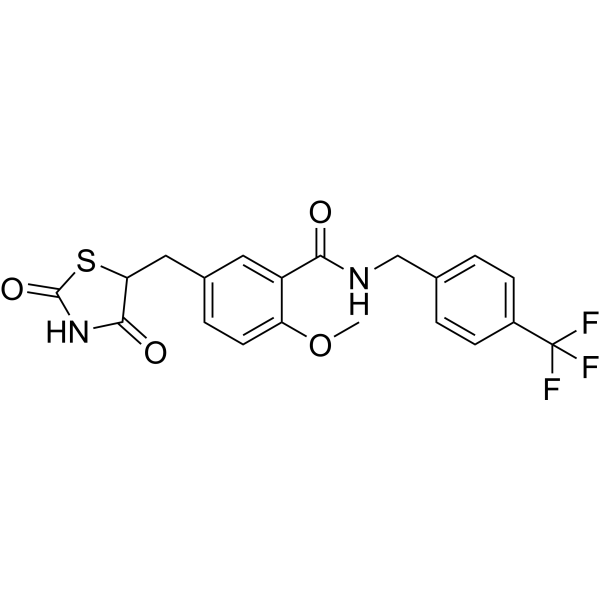
-
- HY-146997
-
|
|
Thyroid Hormone Receptor
|
Metabolic Disease
|
|
TRβ agonist 1 is a selective and mutation-sensitive thyroid hormone receptor β (TRβ) agonist, with an EC50 value of 21 nM. TRβ agonist 1 can be used for researching dyslipidemia, nonalcoholic steatohepatitis (NASH), and resistance to thyroid hormone (RTH) .
|
-
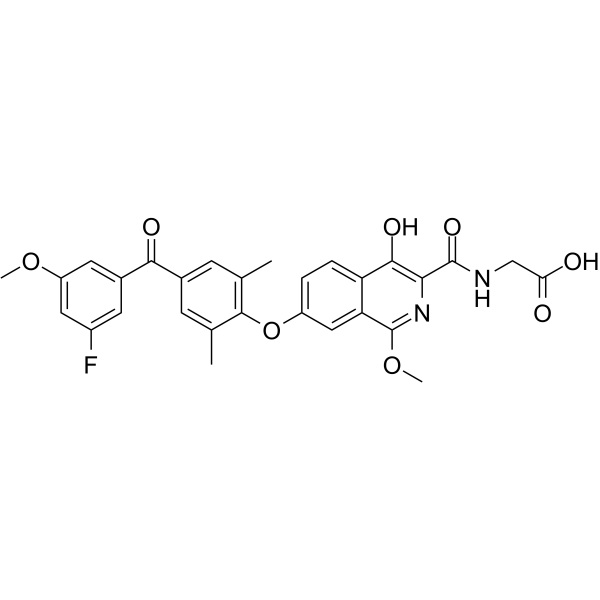
-
- HY-N0261
-
|
|
TNF Receptor
COX
|
Cardiovascular Disease
Inflammation/Immunology
|
|
Aurantio-obtusin is a anthraquinone compound that can be extracted from cassia seed. Aurantio-obtusin has the effects of decreasing blood pressure, decreasing blood lipids and anti-inflammatory.Aurantio-obtusin is an orally active vasodilator. Aurantio-obtusin ameliorates hepatic steatosis through AMPK/ autophagy- and AMPK/TFEB mediated inhibition of lipid accumulation .
|
-
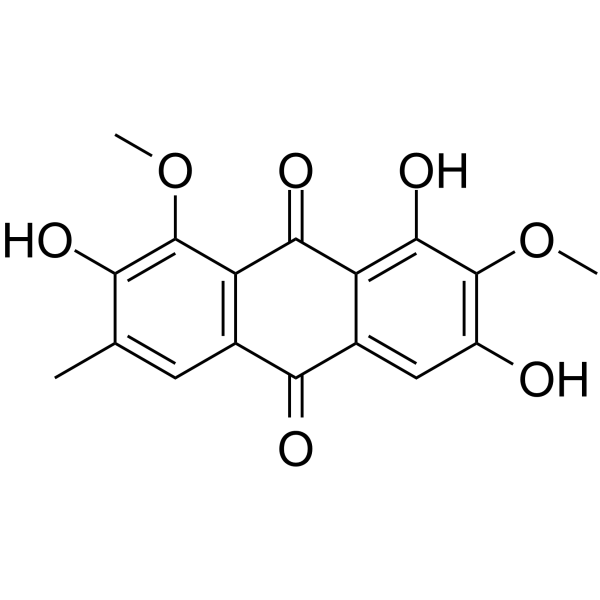
-
- HY-131999
-
|
|
Others
|
Metabolic Disease
|
|
3,4,5-Trihydroxycinnamic acid decyl ester is an excellent inhibitor of lipid absorption and accumulation, with anti-obesity properties. 3,4,5-Trihydroxycinnamic acid decyl ester is a pancreatic lipase inhibitor, with an EC50 of approximately 0.9 μM .
|
-
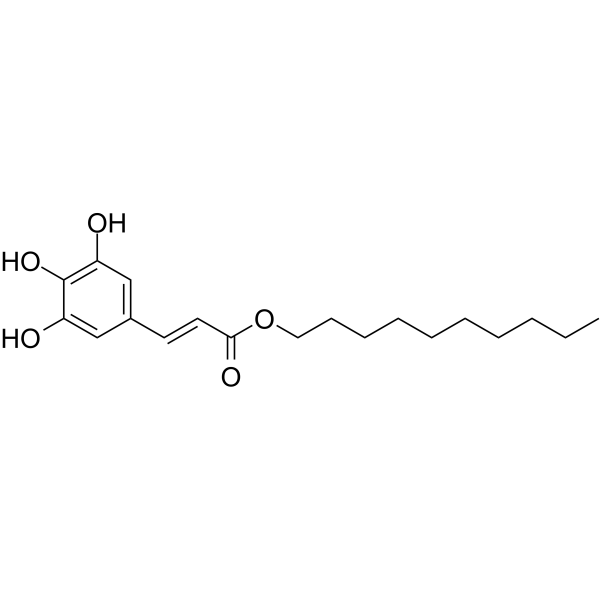
-
- HY-W014282
-
|
|
Biochemical Assay Reagents
|
Others
|
|
4-Cumylphenol is a polycarbonate chain terminator. 4-Cumylphenol is widely used as a material for polycarbonate plastics, surfactants, fungicides and preservatives. 4-Cumylphenol also induces lipid accumulation in mouse adipocytes .
|
-
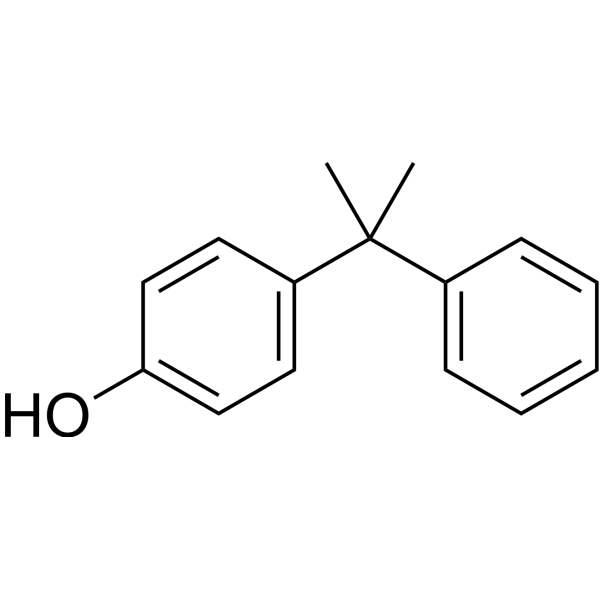
-
- HY-156010
-
|
|
PPAR
|
Metabolic Disease
|
|
PPARγ-IN-2 (Compound 5a) is a PPARγ inhibitor. PPARγ-IN-2 inhibits TG accumulation in 3T3-L1 preadipocytes (EC50: 0.106 μM). PPARγ-IN-2 inhibits high-cholesterol diet (HFC)-induced obesity and related metabolic syndrome, and reduces lipid accumulation in adipose tissue .
|
-
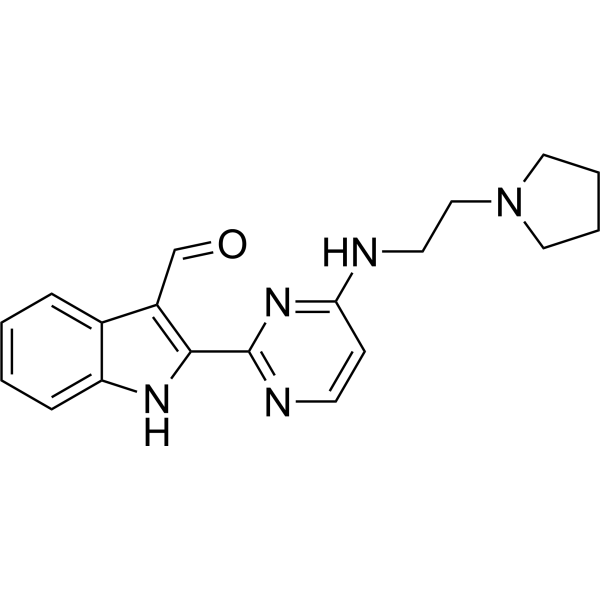
-
- HY-P2818
-
|
Apase
|
Endogenous Metabolite
|
Metabolic Disease
Cancer
|
|
Alkaline phosphatase, Bovine intestine (Apase) is a membrane-bound glycoprotein that catalyzes the hydrolysis of phosphate monoesters at alkaline pH. Alkaline phosphatase can be used in molecular biology and enzyme-free analysis. Inhibition of tissue nonspecific alkaline phosphatase can block intracellular lipid accumulation .
|
-
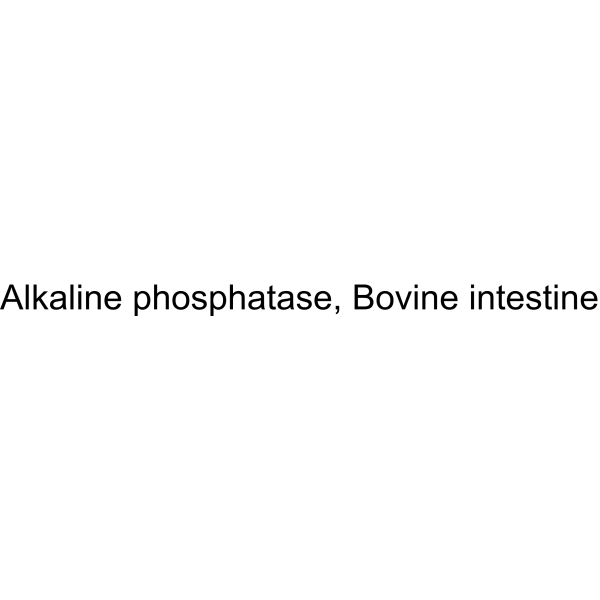
-
- HY-N6707
-
|
WS 1228A; FR 900190
|
Parasite
|
Infection
|
|
Triacsin C (WS 1228A), a natural intracellular long-chain acyl-CoA synthetases (ACSL) inhibitor, is from Streptomyces aureofaciens. Triacsin C inhibits TAG accumulation into lipid droplets (LD) by suppressing ACSL activity . Triacsin C is found to be highly effective against rotavirus replication .
|
-
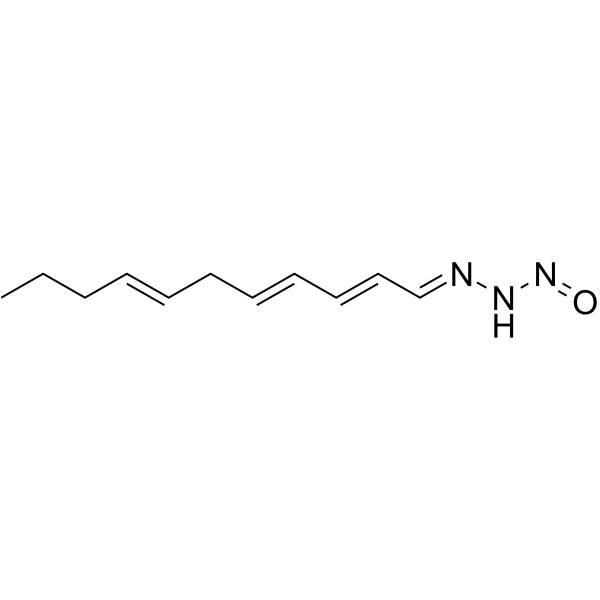
-
- HY-141866
-
|
|
Ceramidase
|
Neurological Disease
|
|
Acid Ceramidase-IN-1 is a potent and oral bioavailable acid ceramidase (AC, ASAH-1) inhibitor (hAC IC50=0.166 μM). Acid Ceramidase-IN-1 has excellent brain penetration in mice .
|
-
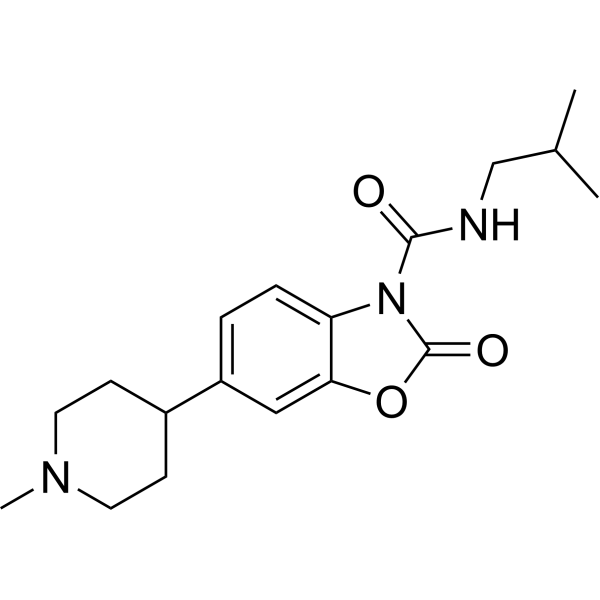
-
- HY-N2118
-
|
|
PPAR
PKA
Akt
p38 MAPK
ERK
|
Metabolic Disease
|
|
Bilobetin, an active component of Ginkgo biloba, can reduce blood lipids and improve the effects of insulin. Bilobetin ameliorated insulin resistance, increased the hepatic uptake and oxidation of lipids, reduced very-low-density lipoprotein triglyceride secretion and blood triglyceride levels, enhanced the expression and activity of enzymes involved in β-oxidation and attenuated the accumulation of triglycerides and their metabolites in tissues. Bilobetin also increased the phosphorylation, nuclear translocation and activity of PPARα accompanied by elevated cAMP level and PKA activity .
|
-
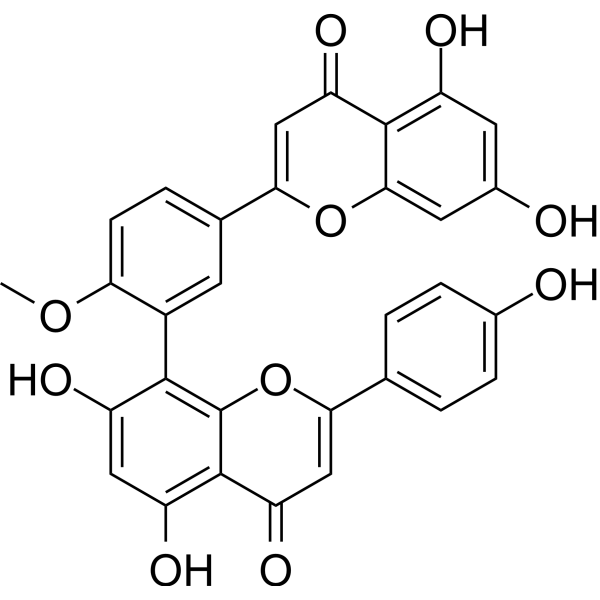
-
- HY-B0415
-
|
|
Glucocorticoid Receptor
Wnt
|
Inflammation/Immunology
Endocrinology
|
|
Fluocinolone is a glucocorticoid glucocorticoid receptor agonist. Fluocinolone is effective in preventing both lipid accumulation and inflammation. Fluocinolone can promote the proliferation of DPCs and has the potential role in repairing injured pulp tissues. Fluocinolone can be used to study the prevention of chemotherapy-induced peripheral neuropathy caused by Paclitaxel (HY-B0015) .
|
-

-
- HY-N1967
-
|
|
|
|
|
Dihydrocurcumin, a major metabolites of curcumin, reduces lipid accumulation and oxidative stress. Dihydrocurcumin regulates mRNA and protein expression levels of SREBP-1C, PNPLA3 and PPARα, increases protein expression levels of pAKT and PI3K, and reduced the levels of cellular NO and ROS via Nrf2 signaling pathways .
|
-

-
- HY-157416
-
|
|
Others
|
Metabolic Disease
|
|
COP1-ATGL modulator 1 (86) is an orally active modulator for COP1-ATGL axis. COP1-ATGL modulator 1 (86) could increase ATGL protein expression, reduce ATGL ubiquitination and COP1 autoubiquitination, and diminish lipid accumulation in hepatocytes in the nanomolar range .
|
-

-
- HY-139040
-
|
|
PPAR
|
Metabolic Disease
|
|
2-Tetradecylthio acetic acid is a pan-peroxisome proliferator activated receptor (pan-PPAR) activator. 2-Tetradecylthio acetic acid induces hypolipidemia. 2-Tetradecylthio acetic acid reduces plasma lipids and enhances hepatic fatty acid oxidation in rodents. 2-Tetradecylthio acetic acid increases the expression of genes involved in fatty acid uptake, activation, accumulation, and oxidation .
|
-
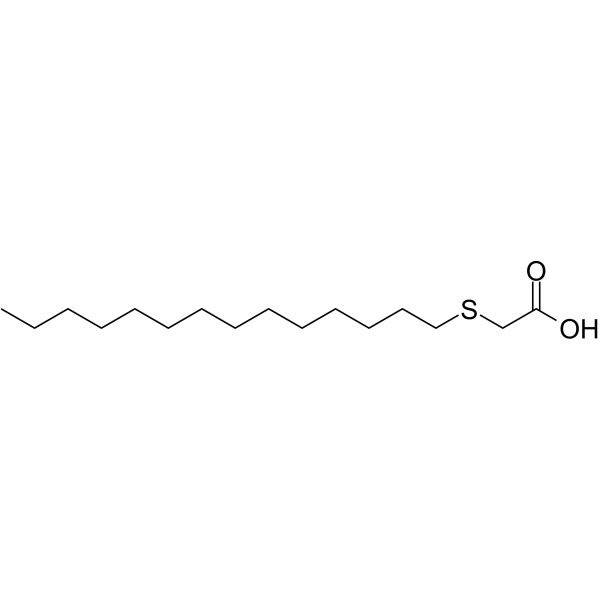
-
- HY-139230
-
|
|
Cannabinoid Receptor
PPAR
|
Metabolic Disease
|
|
OLHHA is a dual CB1 receptor antagonist and PPARα agonist. OLHHA also is a alcohol intake inhibitor with an EC50 value of 0.2 mg/kg. OLHHA reduces both hepatic lipid accumulation and circulating triglyceride levels. OLHHA shows anti-steatotic activity and has the potential for the research of non-alcoholic fatty liver disease (NAFLD) .
|
-
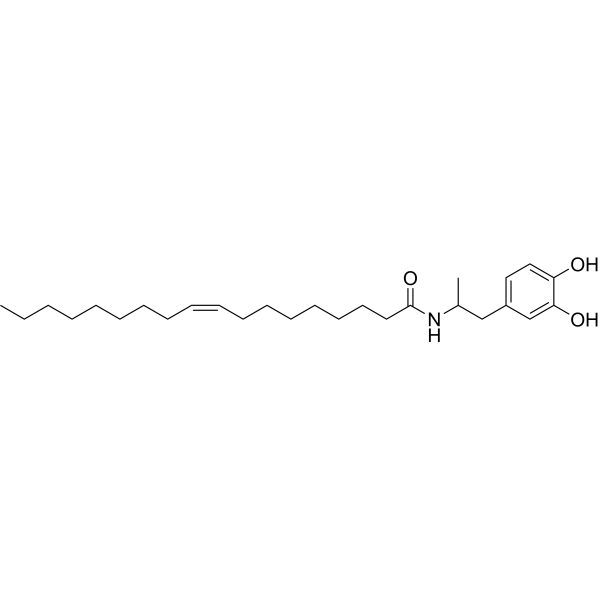
-
- HY-50683
-
|
|
c-Met/HGFR
|
Metabolic Disease
Cancer
|
|
JNJ-38877605 is an orally active ATP-competitive inhibitor of c-Met with an IC50 of 4 nM, 600-fold selective for c-Met than 200 other tyrosine and serine-threonine kinases . JNJ-38877605 inhibits c-Met phosphorylation and regulates lipid accumulation. JNJ-38877605 can be used for tumor and metabolic disease reseach .
|
-
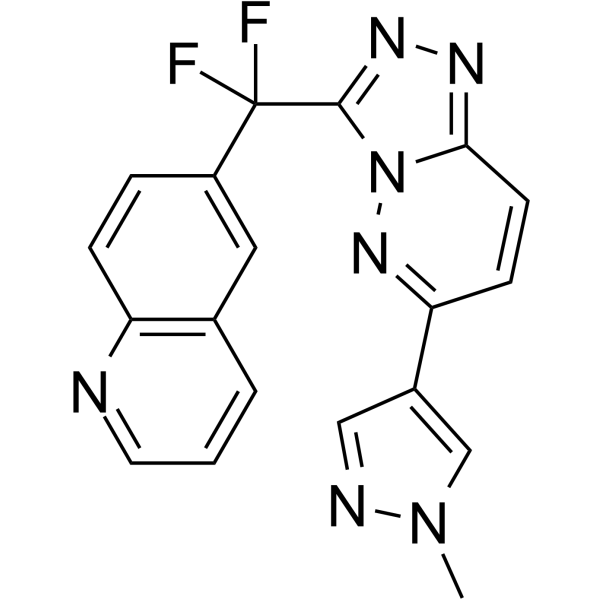
-
- HY-B0600
-
|
AFP-168; MK2452
|
Others
|
Others
|
|
Tafluprost (AFP-168) is an anti-glaucoma prostaglandin (PG) analog. Tafluprost can inhibit the apoptosis of retinal ganglion cells (RGCs) and rat RGCs cells. Tafluprost promotes axon regeneration by regulating Zn 2+-mTORpathway, inhibits intracellular lipid accumulation in human preorbital adipocytes. Tafluprost can be used in the study of optic nerve injury in glaucoma .
|
-
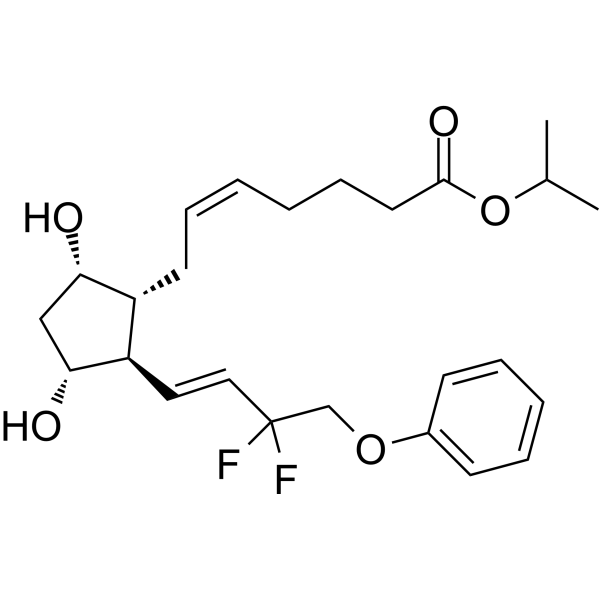
-
- HY-156286
-
|
|
Ferroptosis
|
Cancer
|
|
GPX4-IN-7 (Compound 31), indirubin derivative, is a ferroptosis inducer for colon cancer. GPX4-IN-7 has strong antitumor activity against HCT-116 cells with an IC50 value of 0.49 μM. GPX4-IN-7 can promote the degradation of GPX4, causing the accumulation of lipid ROS to induce ferroptosis .
|
-

-
- HY-148918
-
|
|
β-catenin
Wnt
|
Cancer
|
|
E722-2648 is a potent β-catenin/BCL9 complex inhibitor. E722-2648 specifically inhibits β-catenin/BCL9 complex formation and Wnt activity. E722-2648 disrupts cholesterol homeostasis via increased cholesterol esterification and lipid droplet accumulation. E722-2648 has antitumor activity .
|
-
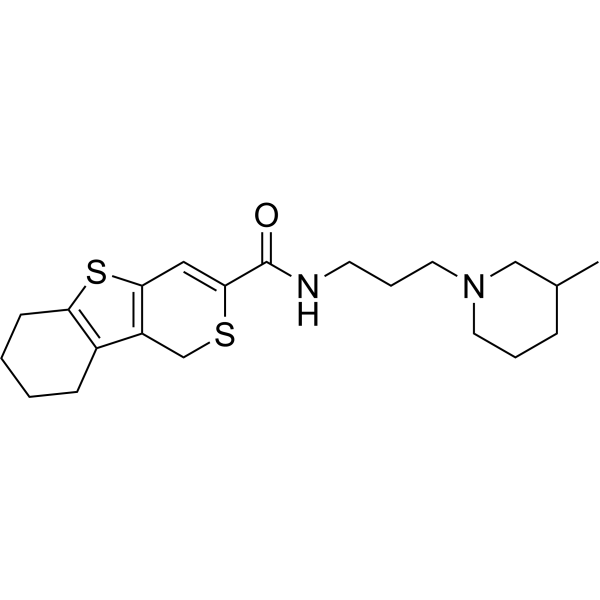
-
- HY-162106
-
|
|
Ferroptosis
PROTACs
Glutathione Peroxidase
|
Cancer
|
|
PROTAC GPX4 degrader-2 (compound 18a) is a proteolysis targeting chimeras (PROTACs) that can degrade glutathione peroxidase 4 (GPX4), with the DC50, 48h value of 1.68 μM. PROTAC GPX4 degrader-2 induces the accumulation of lipid peroxides and mitochondrial depolarization, subsequently triggering ferroptosis. PROTAC GPX4 degrader-2 has anti-proliferative effect .
|
-

-
- HY-133180
-
|
|
Wnt
β-catenin
|
Metabolic Disease
|
|
YW1128 (compound 3a) is a potent Wnt/β-Catenin inhibitor. YW1128 induces the proteasome degradation of β-catenin and subsequent inhibits the Wnt/β-catenin signaling in cells. YW1128 significantly decreases hepatic lipid accumulation. YW1128 improves glucose tolerance of high fat diet-fed mice without noticeable toxicity. YW1128 down regulates the genes involved in the glucose and fatty acid anabolism .
|
-
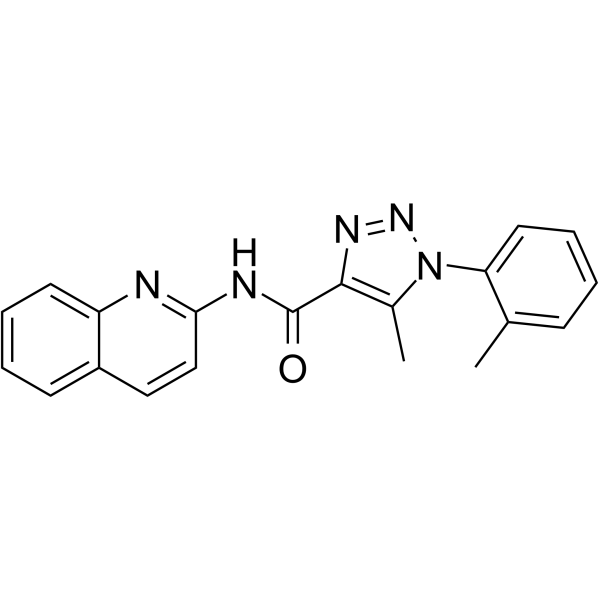
-
- HY-N0385
-
|
|
AMPK
Calcium Channel
|
Cardiovascular Disease
Metabolic Disease
|
|
Gomisin J is a small molecular weight lignan found in Schisandra chinensis and has been demonstrated to have vasodilatory activity . Gomisin J suppresses lipid accumulation by regulating the expression of lipogenic and lipolytic enzymes and inflammatory molecules through activation of AMPK, LKB1 and Ca 2+/calmodulin-dependent protein kinase II and inhibition of fetuin-A in HepG2 cells. gomisin J has potential benefits in treating nonalcoholic fatty liver disease .
|
-
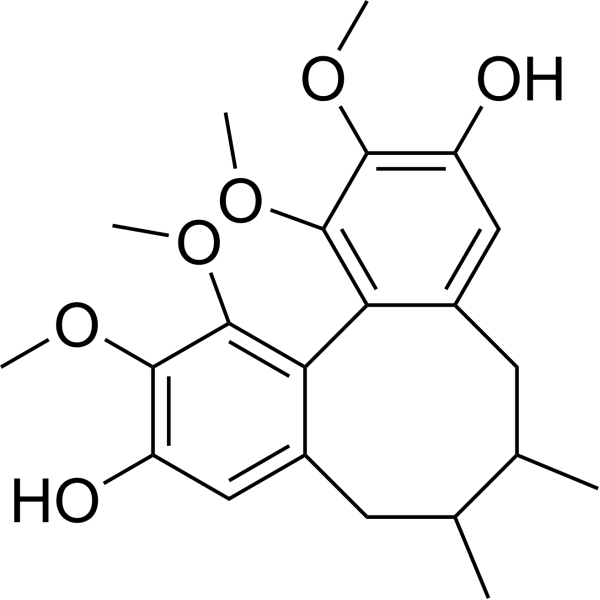
-
- HY-P3455
-
|
|
PGC-1α
|
Metabolic Disease
Cancer
|
|
Ac-SVVVRT-NH2 is a PGC-1α modulator that modulates the activity of the human PGC-1α promoter (114%). Ac-SVVVRT-NH2 increases PGC-1α mRNA (125%) and accumulation of intracellular lipids (128%) in subcutaneous human adipocytes. Ac-SVVVRT-NH2 can be used in the research of diseases which is modulated by PGC-1α .
|
-
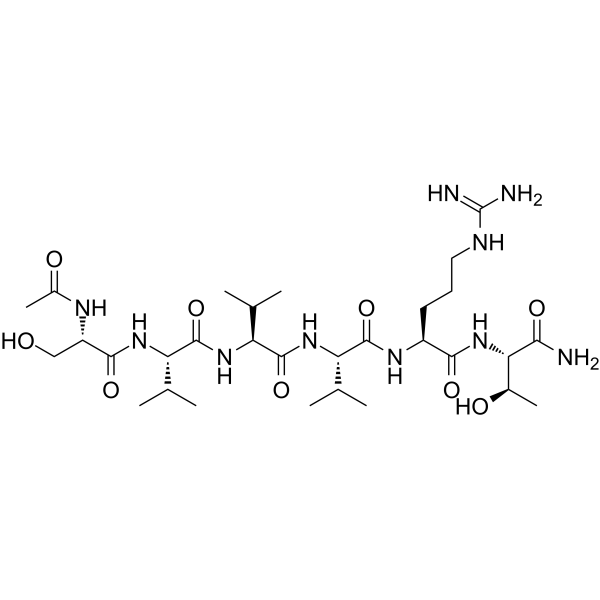
-
- HY-115319
-
|
|
Ferroptosis
|
Inflammation/Immunology
|
|
CP-24879 (hydrochloride) is a potent, selective and combined delta5D/delta6D inhibitor. CP-24879 (hydrochloride) can significantly reduce intracellular lipid accumulation and inflammatory injury in hepatocytes. CP-24879 (hydrochloride) exhibits superior antisteatotic and anti-inflammatory actions in fat-1 and ω-3-treated hepatocytes, and can be used for non-alcoholic steatohepatitis research .
|
-

-
- HY-W127409
-
|
|
Biochemical Assay Reagents
|
Others
|
|
1,2-Dimyristoyl-rac-glycerol (C14:0) is a carboxylic acid ester, glycerolipid and diglyceride with an additional myristoyl group that facilitates interactions between proteins and lipids. Can be used as detergent or reagent. It plays a role in cell biology experiments involving the metabolism and metabolic pathways of glycerolipids. As a diglyceride, this substance consists of two fatty acid chains covalently bonded in the 1,2-form to a glycerol molecule. The diglyceride (DAG) study investigated the process by which DAG is depleted to inhibit fat accumulation. Reagent grade, for research use only.
|
-

-
- HY-B0852
-
|
|
Cytochrome P450
Fungal
Apoptosis
|
Infection
|
|
Tebuconazole is an orally active agricultural azole fungicide which can also inhibit CYP51 with IC50s of 0.9 and 1.3 μM for Candida albicans CYP51 (CaCYP51) and truncated Homo sapiens CYP51 (Δ60HsCYP51), respectively. Tebuconazole induces lipid accumulation and oxidative stress in HepG2 Cells. Tebuconazole decreases MAC-T cells viability and proliferation, induces ER-stress-mediated apoptosis and increases oxidative stress levels in MAC-T cells .
|
-

-
- HY-N11507
-
|
TKV
|
PPAR
|
Metabolic Disease
|
|
Tibesaikosaponin V (TKV) is a triterpene diglycoside, which can be isolated from the methanol extract of the roots of Bupleurum chinense DC.. Tibesaikosaponin V inhibits lipid accumulation and triacylglycerol content occurred without cytotoxicity to adipocytes. Tibesaikosaponin V suppresses the mRNA expression of nuclear transcription factors, such as peroxisome proliferator-activated receptor γ (PPARγ) and CCAAT/enhancer binding protein α (C/EBPα). Tibesaikosaponin V inhibits 3T3-L1 preadipocyte differentiation. Tibesaikosaponin V can be used fro research of obesity and its associated metabolic disorders .
|
-
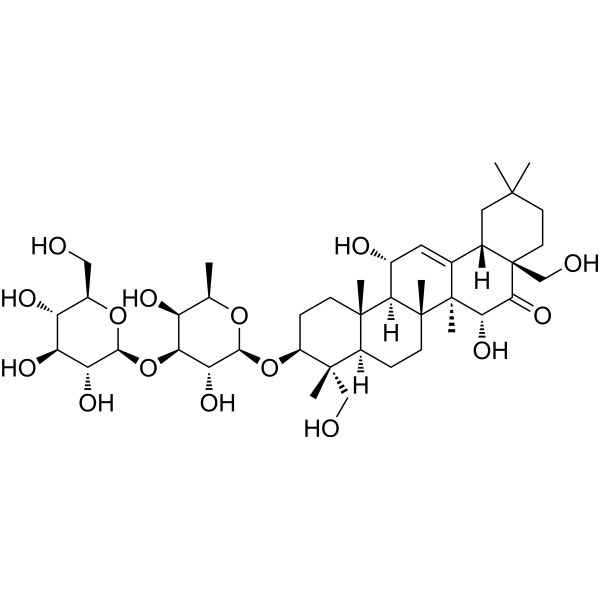
-
- HY-117049
-
|
|
CDK
DYRK
|
Neurological Disease
|
|
Leucettine L41 is a potent inhibitor of dual-specificity tyrosine phosphorylation-regulated kinase 1A (DYRK1A), DYRK2, CDC-like kinase 1 (CLK1), and CLK3 (IC50s = 0.04, 0.035, 0.015, and 4.5 µM, respectively) . Leucettine L41 prevents lipid peroxidation and the accumulation of reactive oxygen species (ROS) induced by Aβ25-35 in the hippocampus in a mouse model of Alzheimer’s disease-like toxicity. Leucettine L41 also prevents memory deficits induced by Aβ25-35 in the same model .
|
-

-
- HY-B0852R
-
|
|
Cytochrome P450
Fungal
Apoptosis
|
Infection
|
|
Tebuconazole (Standard) is the analytical standard of Tebuconazole. This product is intended for research and analytical applications. Tebuconazole is an orally active agricultural azole fungicide which can also inhibit CYP51 with IC50s of 0.9 and 1.3 μM for Candida albicans CYP51 (CaCYP51) and truncated Homo sapiens CYP51 (Δ60HsCYP51), respectively. Tebuconazole induces lipid accumulation and oxidative stress in HepG2 Cells. Tebuconazole decreases MAC-T cells viability and proliferation, induces ER-stress-mediated apoptosis and increases oxidative stress levels in MAC-T cells .
|
-

-
- HY-N2515
-
|
|
NF-κB
PI3K
JAK
Apoptosis
|
Inflammation/Immunology
Cancer
|
|
Ginsenoside Rk1 is a unique component created by processing the ginseng plant (mainly Sung Ginseng, SG) at high temperatures .
Ginsenoside Rk1 has anti-inflammatory effect, suppresses the activation of Jak2/Stat3 signaling pathway and NF-κB .
Ginsenoside Rk1 has anti-tumor effect, antiplatelet aggregation activities, anti-insulin resistance, nephroprotective effect, antimicrobial effect, cognitive function enhancement, lipid accumulation reduction and prevents osteoporosis .
Ginsenoside Rk1 induces cell apoptosis by triggering intracellular reactive oxygen species (ROS) generation and blocking PI3K/Akt pathway .
|
-

-
- HY-W005130
-
|
|
NF-κB
|
Metabolic Disease
|
|
2,4,6-Trihydroxybenzaldehyde is an orally active NF-ĸB inhibitor. 2,4,6-Trihydroxybenzaldehyde shows anti-tumor activity, anti-cancer cell proliferative activity and anti-obesity activity .
|
-
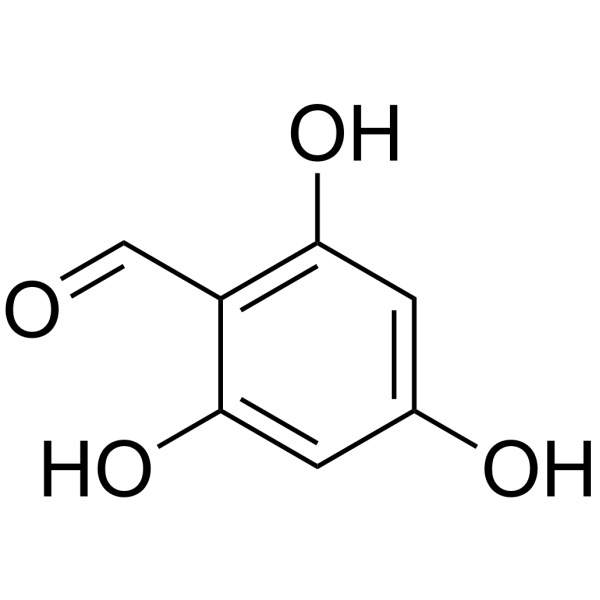
| Cat. No. |
Product Name |
Type |
-
- HY-W127409
-
|
|
Biochemical Assay Reagents
|
|
1,2-Dimyristoyl-rac-glycerol (C14:0) is a carboxylic acid ester, glycerolipid and diglyceride with an additional myristoyl group that facilitates interactions between proteins and lipids. Can be used as detergent or reagent. It plays a role in cell biology experiments involving the metabolism and metabolic pathways of glycerolipids. As a diglyceride, this substance consists of two fatty acid chains covalently bonded in the 1,2-form to a glycerol molecule. The diglyceride (DAG) study investigated the process by which DAG is depleted to inhibit fat accumulation. Reagent grade, for research use only.
|
| Cat. No. |
Product Name |
Target |
Research Area |
-
- HY-P3455
-
|
|
PGC-1α
|
Metabolic Disease
Cancer
|
|
Ac-SVVVRT-NH2 is a PGC-1α modulator that modulates the activity of the human PGC-1α promoter (114%). Ac-SVVVRT-NH2 increases PGC-1α mRNA (125%) and accumulation of intracellular lipids (128%) in subcutaneous human adipocytes. Ac-SVVVRT-NH2 can be used in the research of diseases which is modulated by PGC-1α .
|
| Cat. No. |
Product Name |
Category |
Target |
Chemical Structure |
Your information is safe with us. * Required Fields.
Inquiry Information
- Product Name:
- Cat. No.:
- Quantity:
- MCE Japan Authorized Agent:

























































